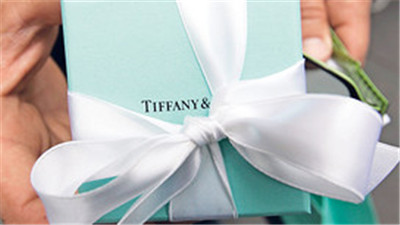When Tiffany is doing well, its luxury products and global presence make it tricky to use its results to draw conclusions about other US retailers. Those other US retailers better hope that the analogy remains tenuous.
當(dāng)?shù)佘侥?Tiffany)業(yè)績良好時(shí),它銷售的奢侈品和全球業(yè)務(wù)地盤,令人難以利用其業(yè)績推測其它美國零售商的表現(xiàn)。現(xiàn)在,那些美國零售商最好指望這種類比繼續(xù)是勉強(qiáng)的。
In 2014, Tiffany shares rallied over 60 per cent. Strong results in the US and resilience in Asia and Europe led it to raise earnings guidance twice, despite the underlying weakness of the US consumer. But at the outset of fourth-quarter earnings season on Monday, the jewellery group said that holiday earnings were weak, and that 2015 was unlikely to sparkle — earnings growth may only reach mid-single digits. Investors in other US retailers may shrug, but plenty of other US companies may soon be cribbing the text of Tiffany’s warning.

2014年期間,蒂芙尼股價(jià)上漲超過60%。美國市場的強(qiáng)勁業(yè)績,以及亞洲和歐洲市場的韌性,令其兩度上調(diào)盈利指引——盡管美國消費(fèi)者底氣不足。但在本周一開始的第四季度盈利報(bào)告期之初,該珠寶集團(tuán)稱圣誕期間盈利不佳,而2015年的業(yè)績不太可能令人振奮——盈利增長只能達(dá)到5%左右。美國其他零售商的投資者可能不屑一顧,但其他大量美國公司可能很快就會(huì)抄襲蒂芙尼的這段警告文字。
Nearly half of Tiffany’s sales come from abroad — primarily in Asia, Japan (a separate segment), and Europe. Currency translation lowered sales growth in Japan and Europe by 13 per cent and 8 per cent, respectively. Stripping that out, sales in Europe were up a healthy 9 per cent while Japan was down 3 per cent. The recent rally in the dollar is expected to sting US multinationals as fourth-quarter results come out. One way to counteract dollar appreciation would be for Tiffany to raise international prices, but economic weakness may preclude that.
蒂芙尼近一半的銷售來自國外——主要在亞洲、日本(按慣例不計(jì)入亞洲數(shù)據(jù))和歐洲。匯率換算令日本和歐洲的銷售增長數(shù)據(jù)分別降低了13%和8%。排除這一因素,歐洲市場銷售健康增長了9%,而日本則下降3%。近期美元匯率持續(xù)上升,預(yù)計(jì)將影響美國跨國企業(yè)的第四季度業(yè)績。對(duì)蒂芙尼來說,消除美元升值負(fù)面影響的辦法之一是在海外市場提價(jià),但經(jīng)濟(jì)疲弱可能意味著這一做法不可行。
Tiffany’s US holiday sales were off 1 per cent. US results earlier in 2014 were strong: both prices and unit sales rose, and Tiffany’s gross margin reached nearly 60 per cent in the third quarter. A significant portion of US sales are to foreign tourists and some of the domestic weakness could stem from greenback-poorer visitors.
蒂芙尼在美國圣誕期間的銷售下跌了1%。美國市場在2014年前期的表現(xiàn)強(qiáng)勁:售價(jià)和銷量都有所上升,公司毛利潤率在第三季度達(dá)到近60%。美國銷售中有很大一部分來自外國游客,美國國內(nèi)市場的疲軟在一定程度上可能源于海外游客因美元升值而底氣下降。
The 2014 Tiffany rally rested on the long-term global growth opportunity and its enduring brand. The current sell-off (the shares were down 14 per cent on Monday) then may present a buying opportunity. Yet it still trades at over 20 times 2015 earnings, a juicy number for a fashion company — no matter how international or prestigious.
2014年的蒂芙尼股價(jià)漲勢(shì)依賴于長期全球經(jīng)濟(jì)增長機(jī)遇,及其經(jīng)久不衰的品牌。就此而言,目前的股價(jià)下跌(周一股價(jià)下跌14%)可能代表著買入的好機(jī)會(huì)。盡管如此,其股價(jià)仍超過2015年預(yù)期盈利20倍,對(duì)時(shí)尚行業(yè)公司來說仍屬高昂——無論它有多么國際化或者有多么高端。












